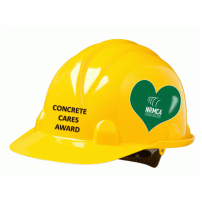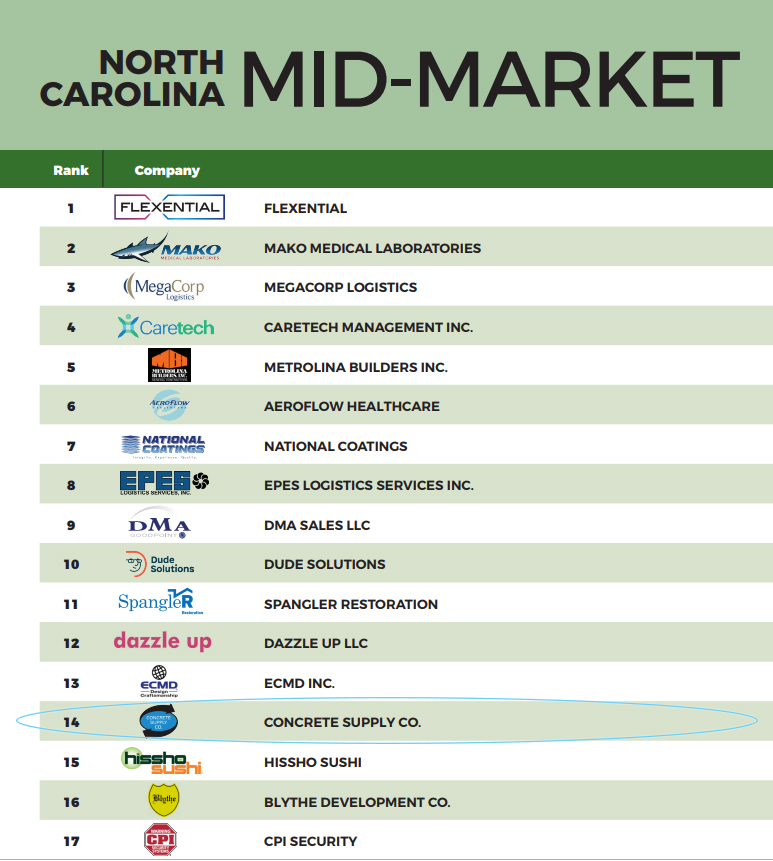Concrete Construction Hazards With Solutions From OSHA
Concrete Construction Hazards and Our Solutions From OSHA
Like many labor-intensive jobs, there are a few occupational safety hazards of working in the concrete construction industry.
At Concrete Supply Co., we believe you, your co-workers, supervisors, and project managers should take the necessary steps to eliminate the potential dangers that exist on your worksite. Our goal is to ensure each worksite is safe for all.
Keep in mind, even the most basic of concrete worksites can be filled with safety hazards.
Throughout our 60 years in the residential, commercial, and DOT concrete construction industries, we’ve become very familiar with the hazards that exist on site. With that being said, we’ve also become accustomed to following OSHA’s specific concrete construction guidelines in order to avoid hazards and keep the site safe.
When it comes time to start your next concrete construction job, plan ahead in a way that prevents the following hazards:
- Chemical burns
- Respiratory irritation, illness, or infection
- Injuries for improper lifting
- Form blowout
- Injuries from falling objects
- Falls from elevated platforms
- Vehicle accidents
Then, implement the guidelines mandated by OSHA to solve or eliminate the concrete industry hazard from your work zone.
Irritation, Dermatitis, and Burns
Any type of direct contact with wet concrete can quickly lead to skin irritation, dermatitis, or worse, a chemical burn.
Think about it–as concrete hardens it absorbs moisture. The chemicals in cement pull moisture out of anything to aid in the drying process.
When cement pulls the moisture from skin, it leaves behind severely damage skin cells. Once concrete hardens, if left untreated, the skin will begin to blister, swell, and bleed, eventually becoming a second to third-degree burn.
The most severe cases of skin coming in direct contact with concrete have led to scarring, the need for skin grafts, and even amputations. And the harmful effects of skin coming in direct contact with concrete are only worsened when admixtures are introduced to the concrete mixture.
OSHA reports that concrete workers in the U.S. lose four times as many workdays for skin problems compared to other construction trade workers.
If you or your crew are working with fresh concrete, extreme care should be taken to avoid and treat skin irritation and/or chemical burns. Always wear protective equipment such as waterproof apparel, tall boots, alkali-resistant gloves, long pants, and long sleeves while on site. If skin irritation persists or in the case of a deep burn, seek medical attention immediately.
OSHA also mandates that employers must supply workers with alkali-resistant gloves and coveralls, as well as provide access to emergency washing stations in order to avoid burns from contact with wet concrete and cement.
Find more of OSHA’s respiratory protection guidelines.
Respiratory Irritation
Exposure to dust from dry concrete mixtures can irritate the respiratory system, leading to various infections and illnesses. In the short term, inhaling concrete dust can irritate the nose and throat making it difficult to breathe.
Know that dust from sanding, grinding, cutting, pouring, and mixing concrete can find its way into the air you and your crew breath.
Therefore, OSHA requires employers to provide persons who perform or are in the area of any of the previously mentioned actions with suitable respiratory protective equipment. This equipment can include a P-, N- or R-95 respirator or face mask to minimize inhalation of cement-related air pollution on site.
When you mix your own concrete on the job site, there is an increased risk for breathing it in. You can prevent the likelihood of breathing a mix’s dust in by having a supplier, like Concrete Supply Co. create the mix in their controlled plant and then delivering it to your site by truck. See the various project’s we’ve safely mixed and delivered ready-mixes to in the past.
Improper Lifting Injuries
While injuries from lifting are common on construction sites, they tend to be especially common with concrete construction due to improper lifting techniques. At about 150 pounds per cubic foot, even a small piece of concrete can weigh enough to cause serious, long-term damage.
Safe lifting procedures and load-carrying techniques will almost always prevent painful and expensive injuries on the job site. When moving items over 50 pounds, use a forklift or lift the load with another individual on the job site. If you must move heavy objects manually, lower and lift with the knees, not the back, and avoid twisting while carrying heavy items.
OSHA encourages employers to train employees on how to lift safely and to implement effective ergonomic (the science of designing the job, equipment, and workspace to fit the worker) programs. Doing so will help ensure a workplace free of hazards.
Read more on how OSHA recommends preventing lifting injuries.
Vehicle Accidents
Often a concrete construction site requires large, heavy-duty pieces of construction equipment and vehicles to operate within a tight work zone–a disaster waiting to happen. When vehicles and other types of mobile equipment are operated improperly by untrained workers, the risk of injuries or even fatalities in the work zone is possible.
It should be known that working on a highly active site is serious. This is not the place for anyone to cut corners or cheat on safety. Encourage your workers to remain highly vigilant and always pay attention. This will vehicle accidents to a minimum.
According to OSHA, you can further prevent concrete construction site accidents by:
- Allowing only workers who are extensively trained to operate equipment. (If a trained worker is not available, bring in an experienced outside professional for concrete pours and other specialty work.)
- Supplying workers with high-visibility safety apparel.
- Using temporary traffic barriers throughout the workspace to notify drivers of clearances, speed limits, duration and type of operations, volume of traffic, etc.
- Planning and setting up the work area in a way that allows for any possible type of maneuvers. (Consider the size of any construction vehicles or equipment that may enter the site.)
- See more from OSHA on site vehicle safety.
When it comes to any concrete vehicle-related operations, be sure they are conducted under the direct supervision of a competent supervisor.
Form blow-out
When using concrete formworks, blow-outs are a very scary but oh-so-real possibility.
The term “blow-out” refers to a break in the form. Form blow-out is due to the pressure from liquid concrete during the concrete placement and consolidation. A blow-out can result in catastrophic effects not only on the structure itself, but injuring workers who may have been working on the structure.
OSHA states that formwork shall be designed, fabricated, erected, supported, braced and maintained so that it will be capable of supporting without failure all vertical and lateral loads that may reasonably be anticipated to be applied to the formwork.
Find a Supplier Who Mitigates Concrete Construction Hazards and Adheres to OSHA Standards
While the listed are general concrete industry hazards, every worksite should have a competent individual or team of individuals responsible for performing an assessment of the site-specific hazards and measures that should be taken to limit them.
Site management should be responsible for ensuring all equipment is routinely serviced and maintained in a safe condition. This is done by conducting periodic on-site inspections of operations, and providing operation and safety training for relevant employees. Site supervisors should continuously observe operation safety, provide immediate corrective training for all unsafe acts, and conduct pre-pour inspections. Employees and crew members should follow all safety and operational procedures and immediately notify supervision of all unsafe conditions. Together you can maintain a safe working environment.
The reality is, hazards exist on any concrete construction site. But there are steps you can take to control and limit incidents–keeping your entire team safe. Take a look at Safety Data Sheets for Concrete Supply Co. which outline our specific safety practices on our site.
If site safety is a top priority of yours, you should find a concrete supplier who also values safety. Safety is something that is sure to come up during the pre-qualification process. See our guide to pre-qualifying suppliers for more important qualities to look for in a concrete supplier.
Feel free to contact an experienced project manager on the Concrete Supply Co. team. We would be happy to discuss how we can help you limit the hazards and dangers lurking on your site. Contact us today!








